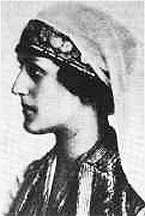Phanariotes
Phanariots, Phanariotes, or Phanariote Greeks (Greek: Φαναριώτες, Romanian: Fanarioți, Turkish: Fenerliler) were members of those prominent Greek families residing in Phanar[1] (Φανάρι, modern Fener),[2] the chief Greek quarter of Constantinople, where the Ecumenical Patriarchate is situated, who came to traditionally occupy four positions of major importance in the Ottoman Empire: Grand Dragoman, Grand Dragoman of the Fleet, Hospodar of Moldavia, and Hospodar of Wallachia.
For all their cosmopolitanism and often Western education, the Phanariotes were aware of their Hellenism; according to Nicholas Mavrocordatos' Philotheou Parerga, "We are a race completely Hellenic".[3]
Phanariotes emerged as a class of moneyed Greek merchants (of mostly noble Byzantine descent) in the latter half of the 16th century, and went on to exercise great influence in the administration in the Ottoman Empire's Balkan domains in the 18th century.[1] They tended to build their houses in the Phanar quarter in order to be close to the court of the Patriarch, who under the Ottoman millet system was recognized as both the spiritual and secular head (millet-bashi) of all the Orthodox subjects (the Rum Millet, or the “Roman nation”) of the Empire (except those Orthodox under the spiritual care of the Patriarchs of Antioch, Jerusalem, Alexandria, Ohrid and Peć), often acting as archontes of the Ecumenical See; thus they came to dominate the administration of the Patriarchate frequently intervening in the selection of hierarchs, including the Ecumenical Patriarch of Constantinople.
Overview
Many members of the Phanariot families (who had acquired great wealth and influence during the 17th century) occupied high political and administrative posts in the Ottoman Empire. From 1669 until the Greek War of Independence in 1821, Phanariotes formed the majority of the dragomans to the Ottoman government (the Porte) and to foreign embassies - due to the higher level of education of Greeks compared to the general Ottoman population.[4] Along with the church dignitaries, the local notables from the provinces and the large Greek merchant class, Phanariotes represented the better educated members of Greek society during Ottoman rule and until the start of the Greek War of Independence. During the latter, Phanariotes played a crucial role and influenced the decisions of the Greek National Assembly, the representative body of the Greek revolutionaries, which met on six occasions between 1821 and 1829.[4][5]
Between the years 1711–1716 and 1821, a number of them were appointed Hospodars (Voivodes or Princes) in the Danubian Principalities (Moldavia and Wallachia), usually as a promotion from dragoman offices; that period is usually termed the Phanariote epoch in Romanian history.[1]
Ottoman Empire
Immediately after the Conquest of Constantinople, Mehmet II deported all the Christian population of the City, leaving only the Jewish inhabitants of Balat.[6] Afterward, he repopulated the city bringing inhabitants - both Christian and Muslim - from the whole empire and from the newly conquered territories.[6] Phanar was then repopulated with Greeks deported from Mouchlion in the Peloponnese and, after 1461, with citizens of Trebizond.[7]
The roots of Greek ascendancy can be traced to the need of the Ottomans for skilled and educated negotiators as the power of their empire declined and they were compelled to rely on treaties more than the force of arms.[1] From the 17th century onwards the Ottomans began facing problems in the conduct of their foreign relations, and were having difficulties in dictating terms to their neighbours; the Porte was faced for the first time with the need of participating in diplomatic negotiations.
Given the Ottoman tradition of generally ignoring Western European languages and cultures, officials found themselves unable to handle such affairs.[8] The Porte subsequently assigned those tasks to the Greeks who had a long mercantile and educational tradition and could provide the necessary skills. As a result, the so−called Phanariotes, Greek and Hellenized families mostly native to Constantinople, came to occupy high posts of secretaries and interpreters to Ottoman officials and officers.[9]
Diplomats and Patriarchs
As a result of Phanariote and ecclesiastic administration, Greeks expanded their influence in the Empire in the 18th century while retaining their Greek Orthodox faith and Hellenism. This had not always been the case in the Ottoman realm, as in the 16th century it was the South Slavs who were the most prominent in Imperial affairs. They converted to Islam in order to enjoy full rights of Ottoman citizenship, especially in the Eyalet of Bosnia, while Serbs also tended to acquire high military positions.[8]
In time, a Slavic presence in the administration gradually became a hazard for the Ottoman rulers, as it was prone to offer full support to Habsburg armies in the context of the Great Turkish War. By the 17th century, the Greek Patriarch of Constantinople became the absolute religious and administrative ruler of all Christian Orthodox subjects within the Empire, regardless of their ethnic background. All formerly independent Orthodox patriarchates, including the Serbian Patriarchate renewed in 1557, came under the authority of the Greek Orthodox Church.[9] Most of the Greek Patriarchs were drawn from among the Phanariotes.
Two Greek social groups therefore emerged and challenged the leadership of the Greek Church.[10] These were the Phanariotes in Constantinople and the local notables in the Helladic provinces (kodjabashis, dimogerontes, prokritoi). According to Constantine Paparrigopoulos, one of the major 19th-century Greek historians, the Phanariotes initially sought the most important secular offices of the Patriarchical Court and, thus, they could frequently intervene in the election of bishops, as well as influence crucial decisions of the Patriarch.[5] Greek merchants and clergy of Byzantine aristocratic origin, who acquired great economic prosperity and political influence, and were later known as Phanariotes, settled in the extreme northwestern district of Constantinople, which had become central to Greek interests after the establishment of the Patriarch's headquarters in 1461 (shortly after Hagia Sophia was converted into a mosque).[11]
Patriarchate
After the 1453 Fall of Constantinople, when the Sultan virtually replaced de facto and de jure the Byzantine Emperor among subjugated Christians, the Ecumenical Patriarch was recognized by the Sultan as the religious and national leader (ethnarch) of Greeks and the other ethnicities that were included in the Greek Orthodox Millet.[12] The Patriarchate earned a primary importance and occupied this key role among the Christians of the Empire because the Ottomans did not legally distinguish between nationality and religion, and thus regarded all the Orthodox Christians of the Empire as a single entity.[13]
The position of the Patriarchate in the Ottoman state encouraged projects of Greek renaissance, centered on the resurrection and revitalization of the Byzantine Empire. The Patriarch and those church dignitaries around him constituted the first centre of power for the Greeks inside the Ottoman state, one which succeeded in infiltrating the structures of the Ottoman Empire, while attracting the former Byzantine nobility.[13]
Merchant middle class
It was the wealth of the extensive Greek merchant class that provided the material basis for the intellectual revival that was the prominent feature of Greek life in the half century and more leading to 1821. Greek merchants endowed libraries and schools; on the eve of the Greek War of Independence the three most important centres of Greek learning, schools-cum-universities, were situated in Chios, Smyrna and Aivali, all three major centres of Greek commerce.[14]
The first Greek millionaire in the Ottoman era was Michael "Şeytanoğlu" Kantakouzenos, who earned 60,000 ducats a year from his control of the fur trade from Muscovy;[15] he was eventually executed on the Sultan's order.
Civil servants
During the 18th century, Phanariotes appeared as a hereditary clerical−aristocratic grouping, managing the affairs of the Patriarchate, and becoming the dominant political power of the Greek community in Ottoman lands. In time, they grew to become a very significant political factor in the Ottoman Empire, and, as diplomatic agents, played a considerable role in the affairs of the Kingdom of Great Britain, France, and the Russian Empire.[16]
Phanariotes soon competed for some of the most important administrative offices in the Ottoman administration: several of these involved collecting Imperial taxes, holding monopolies on commerce, working under contract in various enterprises, being purveyors to the court, and even rulers over one of the two Danubian Principalities (Moldavia and Wallachia). At the same time, they engaged in private trade dealings, and acquired great control over the crucial wheat trade on the Black Sea. Phanariotes managed to expand their commercial activities first into the Kingdom of Hungary, and then to all other Central European states. Such activities intensified their contacts with Western nations, and as a consequence they became familiar with Western languages and cultures.[11]
Just before the outbreak of the Greek War of Independence, Phanariotes were firmly established as the political elite of Hellenism. According to Greek historian Constantine Paparrigopoulos, this was a natural evolution, given the Phanariotes' education and their experience in supervising vast regions of the Empire.[5] In addition, Svoronos argued that they subordinated their national identity to their class identity, since they merely endeavored to achieve peaceful co−existence between the conqueror and the conquered; Svoronos believes that, in this way, Phanariotes failed to enrich the Greek national identity, and lost ground to the groups that grew through their confrontation with the Ottoman Empire, first the klephts and then the Armatoloi.[17]
Phanariotes in the Danubian principalities
Establishment and contrasts
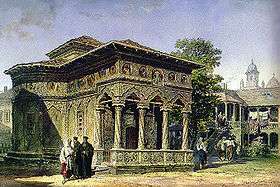
The period is not to be understood as marking the introduction of a Greek presence into the principalities, which had already established itself in both provinces and had even resulted in the appointment of Greek Princes before the 18th century. After the end of the Phanariote epoch, various families of Phanariote ancestry in both Wallachia and Moldavia identified themselves as Romanian, and remained present in Romanian society — among them, the Rosetti family, whose member C. A. Rosetti represented the radical and nationalist cause during and after the 1848 Wallachian revolution.
The attention of Phanariotes was concentrated on occupying the most favorable offices the Empire could offer to non-Muslims, but also to the Principalities of Moldavia and Wallachia, which were still relatively rich, and more importantly, autonomous (despite having to pay tribute as Vassal states). Many Greeks had found favorable conditions there for commercial activities, by far more advantageous when compared with the difficultes inside the Ottoman Empire, and also an opportunity to gain political power. Many had entered the ranks of Wallachian and Moldavian boyar nobility by marriage.
Although rarely occurring, reigns of local Princes were not excluded on principle. This situation had even determined several arguably hellenized Romanian noble families, such as the Callimachis (originally Călmașul), the Ghicas or the Racovițăs, to penetrate into the Phanar nucleus, in order to facilitate and increase their chances to occupy the thrones, and later to successfully maintain their positions.
While most sources would agree to 1711 being the moment where the gradual erosion of the traditional institutions had reached its ultimate stage, characteristics usually ascribed to the Phanariote era had made themselves felt long before it.[18] The Ottomans had been enforcing their choice for Hospodars throughout previous centuries (as far back as the 15th), and foreign — usually Greek or Levantine — boyars had been competing with the local ones since the late 16th century. Rulers since Dumitraşcu Cantacuzino in Moldavia and George Ducas, a Prince of Greek origin, in Wallachia (both in 1673) had been forced to surrender all of their family members, and not just selected ones, as hostages in Constantinople. At the same time, the traditional elective system in the Principalities had accounted for long periods of political disorder, and was in fact dominated by a small number of ambitious families (whether local or foreign), who had entered violent competition for the two thrones and monopolized land ownership[19] — a notable example is the conflict opposing the Craiovești and the Cantacuzinos in the period before 1711.
1711–1715

The clear change in policy was determined by the fact that Wallachia and Moldavia, although autonomous, had entered a period of continuous skirmishes with the Ottomans, due to insubordination of the local princes, one especially associated with the rise of Imperial Russia's power under Peter the Great and the firm presence of the Habsburg Empire on the Carpathian border with the Principalities. Dissidence within the two countries became more dangerous for the Turks, who were now confronted with the attraction exercised on the population by the protection offered to them by a fellow Eastern Orthodox state. This became obvious with Mihai Racoviță's second rule in Moldavia, when the Prince plotted with Peter to have Ottoman rule overthrown. Incidentally, his replacement, Nicholas Mavrocordatos, was also the first official Phanariote in his second reign in Moldavia (he was also to replace Ștefan Cantacuzino in Wallachia, as the first Phanariote ruler in that country).
A crucial moment in the policy change was the Russo−Turkish War of 1710−1713, when Dimitrie Cantemir sided with Russia and agreed to a Russian tutelage over his country. After Russia suffered a major defeat and Cantemir went into exile, the Ottomans took charge of the succession to the throne of Moldavia, soon followed by similar measures in Wallachia (in this case, prompted by Ștefan Cantacuzino's alliance with the Habsburg commander Prince Eugene of Savoy in the closing stages of the Great Turkish War).
Rulers and retinues
The person raised to the office of Prince was usually the chief Dragoman of the Porte, and was consequently well versed in contemporary politics and the statecraft of the Ottoman government.
The new Prince, who obtained his office in exchange for a heavy bribe (not a new requirement in itself), proceeded to the country which he was selected to govern, and whose language he usually did not know. Once the new Princes were appointed, they were escorted to Iași or Bucharest by retinues composed of their families, favourites, and their creditors (from whom they had borrowed the bribe funds). The Prince and his appointees counted on recouping these in as short a time as possible and in collecting an amount sufficient to live on after the termination of their brief time in office.
Taking the two principalities together, 31 princes from 11 different families ruled during the Phanariote epoch. Many times they were exiled or even executed: of these 31 princes, seven suffered a violent death, and a few were executed at their own courts of Bucharest or Iași.
When, owing to cases of disloyalty towards the Porte by the Princes, the choice became limited to a few families, it became frequent that rulers would be shifted from one principality to the other: the Prince of Wallachia, the richer of the two Principalities, would pay certain sums in order to avert his transfer to Iaşi, while the Prince of Moldavia would bribe supporters in Constantinople in exchange for his appointment to Wallachia. For example, Constantine Mavrocordatos ruled a total of ten different times in Moldavia and Wallachia. The debt was, however, owed to various creditors, and not to the Sultan: in fact, the central institutions of the Ottoman Empire generally seemed determined to maintain their rule over the Principalities, and not exploit them irrationally. In one early example, Ahmed III even paid part of Nicholas Mavrocordatos' sum.
Administration and boyars
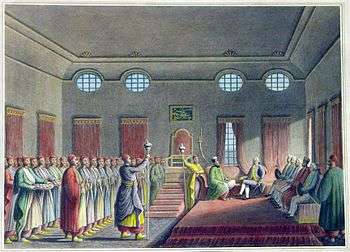
The Phanariote epoch was initially characterized by excessive fiscal policies, driven by both Ottoman needs and by the ambitions of some of the Hospodars (who, mindful of their fragile status, sought to pay back their creditors and increase their wealth while they still were in a position of power). In order to make the reigns lucrative while raising funds that would satisfy the needs of the Porte, Princes channeled their energies into spoliation, and the inhabitants, liable to increasing and diversified taxation, were in many instances reduced to destitution. However, the most odius taxes, mistakenly identified with the Phanariotes in modern Romanian historiography, were of much older provenance (such as the văcărit, first imposed by Iancu Sasul in the 1580s).
The mismanagement of many Phanariote rulers stands in contrast with the achievements and projects of others, such as Constantine Mavrocordatos' (who abolished serfdom in 1746 in Wallachia, and in 1749 in Moldavia) and Alexander Ypsilantis'. They were inspired by Habsburg serf policy. Ypsilantis tried to reform the legislation and impose salaries for administrative offices — in an effort to halt the depletion of funds through the sums the administrators, local and Greek alike, were using for their own maintenance (it had by then become more profitable to hold office than to own land). His Pravilniceasca condică, a rather modern legal code, met stiff boyar resistance.
In fact, the focus of such rules was many times the improvement of state structures against conservative wishes. Documents for the time show that, despite the change in leadership and boyar complaints, around 80% of those seated in the Divan (an institution roughly equivalent to the Estates of the realm) were members of traditionally local families.[20] This tended to render endemic the social and economical issues of previous periods, as the inner circle of boyars not only managed to block initiatives such as Alexander Ypsilantis', but also pressured for tax exemptions — which they obtained, extended, and successfully preserved.[21]
Russian influence
The Phanariotes copied Russian institutions as well as Habsburg. In the mid 18th century they made Noble rank dependent on state service just as Peter I of Russia did. After the Treaty of Kuchuk-Kainarji (1774) allowed Russia to intervene on the side of Ottoman Eastern Orthodox subjects, most of the Porte's political tools of political pressure became ineffective. The Porte had to further offer concessions, with the imperative of maintaining hold over the countries as economical and strategic assets: the treaty made any increase in the tribute impossible, and, between 1774 and the 1820s, it plummeted from around 50,000 to 20,000 gold coins (equivalent to Austrian gold currency) in Wallachia, and just 3,100 in Moldavia.[22]
In the immediately following period, Russia made use of its new prerogative forcefully: the deposition of Constantine Ypsilantis (in Wallachia) and Alexander Mourousis (in Moldavia) by Selim III, called on by the French Empire's ambassador to the Ottoman Empire, Horace Sébastiani (whose fears of pro−Russian conspiracies in Bucharest were partly confirmed), constituted the casus belli for the conflict of 1806–1812 (the Russian general Mikhail Andreyevich Miloradovich swiftly reinstated Ypsilantis during his military expedition to Wallachia).
Such gestures inaugurated a period of effective Russian supervision, which culminated with the Organic Statute administration of the 1830s; the Danubian Principalities grew in strategic importance with the Napoleonic Wars and the Decline of the Ottoman Empire, as European states became interested in halting Russian southwards expansion (of which a noted development was the annexation of Bessarabia in 1812). In turn, the new consulates opened in the two countries' capitals, as a means to ensure observation of developments in Russian−Ottoman relations, had an indirect impact over the local economy, as rival diplomats began awarding their protection and sudit status to merchands competing with the local guilds. Curiously, it was Nicholas I of Russia who pressurized Wallachia and Moldavia into granting constitutions, 1831 and 1832 respectively. This was to weaken any native rulers.[23]
In parallel, the boyars started a petitioning campaign against the Princes in power: although sometimes addressed to the Porte and even the Habsburg Monarchy, they mostly demanded Russian supervision. While making reference to cases of corruption and misrule, the petitions show their signers' conservative intentions. The boyars tend to refer to specific, but nonetheless fictitious, Capitulations that either of the Principalities would have signed with the Ottomans — demanding that the rights guaranteed through them be restored.[24] They also viewed with suspicion reform attempts on the side of Princes, claiming these were not legitimate — in alternative proposals (usually taking the form of constitutional projects), the boyars express a wish for the establishment of an aristocratic republic.[25]
Greek war of independence and legacy
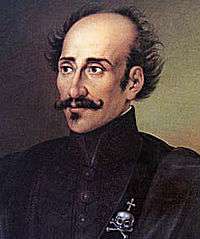
The active part taken by the Greek Princes in revolts after 1820 (see Greek War of Independence), together with the disorder provoked by the Philikí Etaireía, of which the Ghica, Văcărescu and Golescu families were active members,[26] following its uprising against the Ottoman Empire in Moldavia and Tudor Vladimirescu's Wallachian uprising, led to the disappearance of promotions from within the Phanar community as the Greeks were no longer trusted by the Porte. Relevant for the tense relations between boyars and princes, Vladimirescu's revolt was, for most of its duration, the result of compromise between Oltenian pandurs and the regency of boyars attempting to block the ascension of Scarlat Callimachi, the last Phanariote ruler in Bucharest.[27]
Ioan Sturdza's rule in Moldavia and Grigore IV Ghica's in Wallachia are considered the first of the new period: as such, the new regime was to have its own abrupt ending with the Russian occupation during another Russo−Turkish War, and the subsequent period of Russian influence (see Regulamentul Organic).
Most Phanariotes acted as patrons of Greek culture, education, and printing. They founded academies which attracted teachers and educated pupils from throughout the Orthodox commonwealth, and there was some contact with intellectual trends in Habsburg central Europe.[1] Further many of the Phanariote princes were capable and farsighted rulers: As prince of Walachia in 1746 and of Moldavia in 1749, Constantin Mavrocordat abolished serfdom, and Alexandru Ipsilanti of Walachia (reigned 1774–1782) initiated extensive administrative and legal reforms. Alexandru's enlightened reign, moreover, coincided with subtle shifts in economic and social life and with the emergence of new spiritual and intellectual aspirations that pointed to the West and to reform.[28]
Nonetheless, condemnation of the Phanariotes is a particular focus of Romanian nationalism, usually integrated with the resentment of foreigners as a whole. The tendency unifies pro− and anti−modernising attitudes: Phanariote Greeks are painted as reactionary elements (as their image was presented by Communist Romania), as well as agents of brutal and opportunistic change (as presented in Mihai Eminescu's Scrisoarea a III-a).
Leading Phanariote families

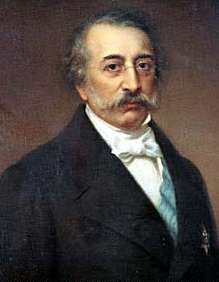
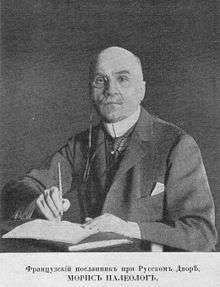
- Angelos
- Argyropoulos (see John Argyropoulos)
- Athanasovici
- Callimachi family (Călmașu), also known as Kalmaşu/Kallimaşu originally a Romanian boyar family from Moldavia
- Callivazis family, originally from Trabzon, relocated to the Russian Empire
- Cantacuzenus (Cantacuzino) (Kantakouzenus/Kantakouzenos)
- Caradjas (Caragea) Karaca, Karacas
- Caratheodoris (see Constantin Carathéodory)
- Cariophyllis
- Chrisoscoleos
- Chrisovergis (Hrisovergis) Morea origin.
- Diamandis
- Doukas also known as Dukas. Old Epirus despots
- Evalidis ("Evaoglous", "Hadjievalidis") Trebizond origin. Today Sancak, Kanca families in İstanbul, Trabzon and Hadjievalidis family in Lesbos
- Gerakis, from Kefalonia
- Ghica family, originally Aromanians or Albanians from Macedonia
- Hantzeris (Handjeri) also Hançeri, Pıçakçı and Hançeroglou in modern İstanbul
- Karatzas
- Kavadas (Kavvadas), from Chios
- Komnenos (Komnenus, Comnenos) Trebizond origin. Byzantine and Trebizond emperors.
- Lambrinos
- Lapithis, from Crete
- Lazaridis/Lazarević, Serbianized family from Montenegro
- Lermis (Lermioglous, Lermilis) Pontic Greeks
- Levidis
- Mamonas
- Manos
- Mavrocordatos (Mavrocordato), (Mavrokardaoglou) from Chios
- Mavroudis
- Mavroyennis
- Mourousis (Moruzi), Mavruzis.
- Musurus (see Marcus Musurus)
- Palaiologos
- Photeinos ["Foteinos or Fotinos')
- Philanthropenos ("Filandropenos")
- Rallis, from Chios
- Rizos Rangavis (see Alexandros Rizos Rangavis)
- Racovitza (Racoviță), Romanian noble family from Moldavia and Wallachia
- Rallet
- Ramalo (Romalo)
- Rosettis (Ruset or Russeti) Royal Boyar family of the two Danubian Principalities (Moldavia and Wallachia)
- Scanavis
- Schinas
- Sereslis
- Soutzos (Suțu or Sutzu, "Sütçü)
- Tzanavarakis ("Tzanavaris, Çanavaris also Canavaroğulları)
- Venturas
- Vlachoutzis
- Văcărescu, Romanian boyars from Wallachia, gave the first poets to Romanian literature[29]
- Vlastos, from Crete
- Ypsilantis (Ipsilanti)
Extinct Phanariote families
- Aristarchis
- Ballasakis
- Cananos
- Caryophyles
- Dimakis
- Eupragiotes
- Iancoleos (della Rocca)
- Mavrogenes (see Manto Mavrogenous)
- Moronas
- Negris
- Paladas, from Crete
- Plaginos
- Rizos Neroulos
- Ramadan
- Souldjaroglou
- Tzoukes
See also
- Ottoman Greeks
- Diafotismos
- Greeks in Romania
- Bulgarian Exarchate
- Early Modern Romania
- Danubian Principalities
- List of rulers of Moldavia
- List of rulers of Wallachia
- History of the Russo-Turkish wars
- State organisation of the Ottoman Empire
Notes
- 1 2 3 4 5 Encyclopædia Britannica,Phanariote, 2008, O.Ed.
- ↑ The names Fener and Φανάρι (Fanari) derive from the Greek nautical word meaning "Lighthouse" (literary "lantern" or "lamp")
"Τριανταφυλλίδης On line Dictionary". Φανάρι (ναυτ.). Retrieved October 7, 2006. - ↑ Mavrocordatos Nicholaos, Philotheou Parerga, J.Bouchard, 1989, p.178, citation: Γένος μεν ημίν των άγαν Ελλήνων
- 1 2 Encyclopædia Britannica, The Phanariotes, 2008, O.Ed.
- 1 2 3 Paparregopoulus, Eb, p. 108.
- 1 2 Mamboury (1953), p. 98
- ↑ Mamboury (1953), p. 99
- 1 2 Stavrianos, p. 270
- 1 2 Hobsbawm pp. 181–85.
- ↑ Svoronos, p. 87
- 1 2 Svoronos, p. 88.
- ↑ Glenny, p. 195.
- 1 2 Svoronos, p. 83.
- ↑ Encyclopædia Britannica, Greek history, The mercantile middle class, 2008 ed.
- ↑ Steven Runciman. The Great Church in Captivity. Cambridge University Press, 1988, page 197.
- ↑ Svoronos, p. 89.
- ↑ Svoronos, p. 91.
- ↑ See the historiographical discussion in Drace-Francis, The Making of Modern Romanian Culture, p. 26, note 6.
- ↑ Djuvara, pp. 123, 125–26.
- ↑ Djuvara, p.124
- ↑ Djuvara, p.69
- ↑ Berza
- ↑ A History of the Balkans 1804-1945, page 47
- ↑ Djuvara, p.123
- ↑ Djuvara, p.319
- ↑ Alex Drace-Francis, The Making of Modern Romanian Culture: Literacy and the Development of National Identity, p.87, 2006, I.B.Tauris, ISBN 1-84511-066-8
- ↑ Djuvara, p.89
- ↑ Encyclopædia Britannica,History of Romania, Romania Between Turkey and Austria,2008, O.Ed.
- ↑ Encyclopædia Britannica, Vacarescu family, 2008, O.Ed.
References
 This article incorporates text from a publication now in the public domain: Chisholm, Hugh, ed. (1911). "Phanariotes". Encyclopædia Britannica (11th ed.). Cambridge University Press.
This article incorporates text from a publication now in the public domain: Chisholm, Hugh, ed. (1911). "Phanariotes". Encyclopædia Britannica (11th ed.). Cambridge University Press.- Mamboury, Ernest (1953). The Tourists' Istanbul. Istanbul: Çituri Biraderler Basımevi.
- Mihai Berza, "Haraciul Moldovei și al Țării Românești în sec. XV–XIX", in Studii și Materiale de Istorie Medie, II, 1957, p. 7–47
- Alex Drace-Francis, The Making of Modern Romanian Culture, London - New York, 2006, ISBN 1-84511-066-8
- Neagu Djuvara, Între Orient și Occident. Țările române la începutul epocii moderne, Humanitas, Bucharest, 1995
- Vlad Georgescu, Istoria ideilor politice românești (1369-1878), Munich, 1987
- Glenny, Misha (2001). The Balkans: Nationalism, War & the Great Powers, 1804-1999. Penguin (Non−Classics). ISBN 0-14-023377-6.
- Eric Hobsbawm, Age of Revolutions, section "Greek War of Independence"
- Konstantinos Paparrigopoulos (- Pavlos Karolidis), History of the Hellenic Nation (Volume Eb), Eleftheroudakis, Athens, 1925
- L. S. Stavrianos, The Balkans Since 1453
- Svoronos, Nikos (2004). "The Ideology of the Organization and of the Survival of the Nation". The Greek Nation. Polis. ISBN 960-435-028-5.

_Royal_Full_Achievement_of_Arms_Coat_of_Arms_Heraldry.jpg)
